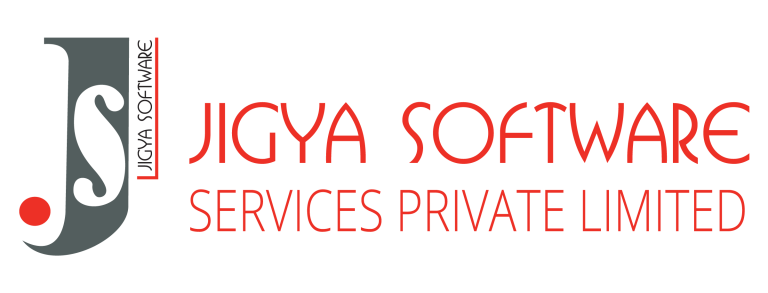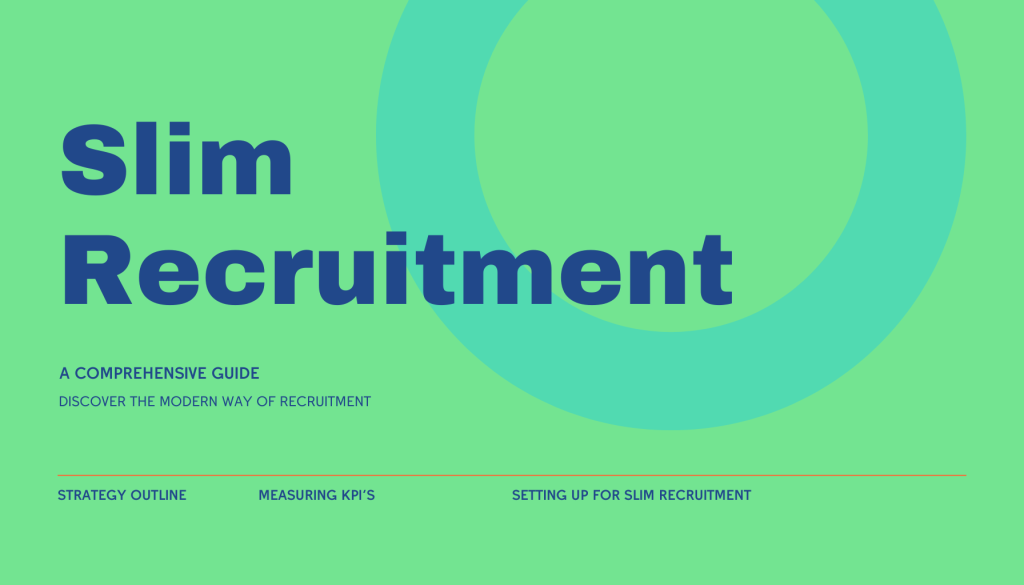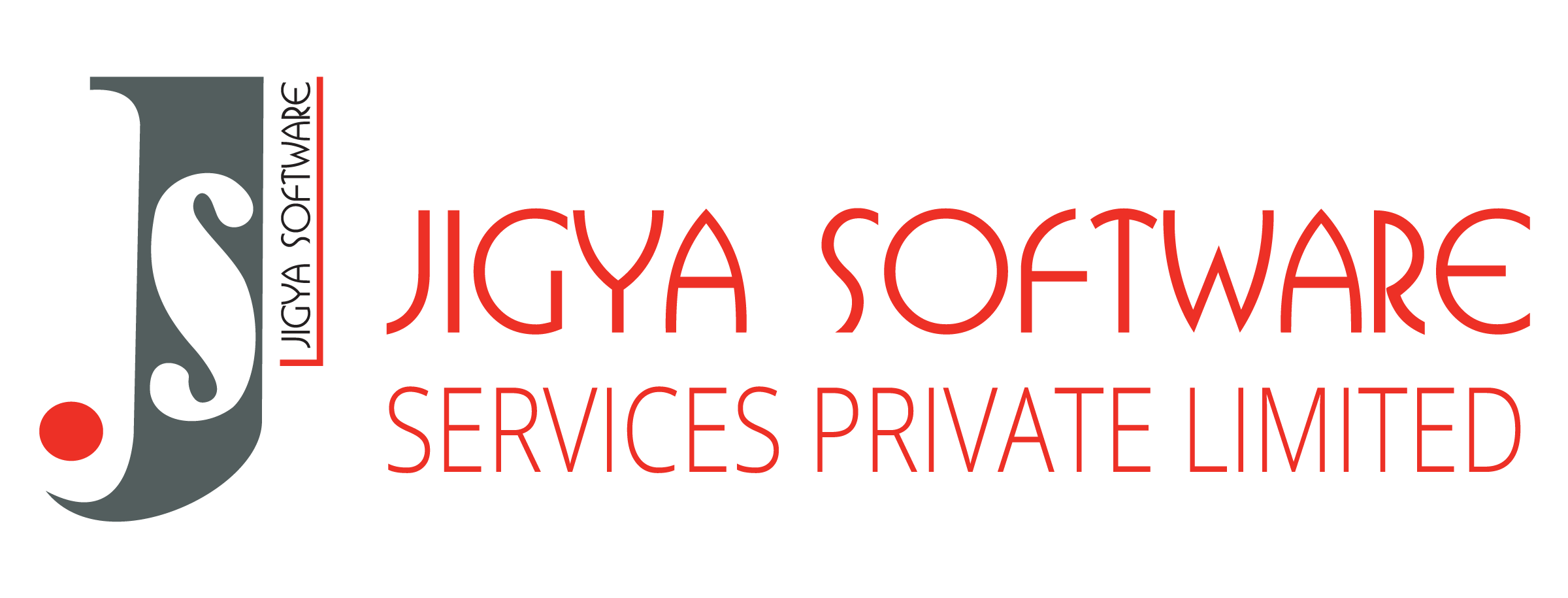Upon surveying 300 HR leaders, it was found that 70% of these professionals had lost the opportunity to hire key candidates due to delays and inefficiencies in their hiring processes.
Slim recruitment incorporates principles and practices that expedite the filling of positions, facilitate ongoing feedback from hiring managers, and allow for continuous adjustments throughout the recruitment cycle. These unique strategies followed by Orpine Inc, aim to streamline and enhance talent acquisition efficiency.
At its heart, Slim recruitment is designed to be flexible and fast. It emphasizes the importance of making small, timely adjustments that align with business needs, significantly cutting down on unnecessary time and effort, thereby streamlining the recruitment process.
The Need for Slim Recruitment in Modern Business Environments
The difficulty in securing talent is just one of several challenges that recruitment teams encounter. Here are some essential pitfalls that companies often encounter, which hinder them from consistently finding the best fit talent for their organization:
Overcomplicating the Hiring Process
It is common for companies to complicate their hiring processes by adhering to outdated methods that don’t align with their actual needs. This lack of clarity often leads to inefficient practices, including the retention of unnecessary steps and outdated technologies. Many organizations lack insight into the most effective recruitment strategies, resulting in a disjointed process where various aspects of hiring do not synchronize well, leading to redundancy.
Collaboration and Time Management
The scarcity of talent, coupled with poor internal collaboration, severely restricts the efficiency of recruitment efforts. It’s frequently observed that conflicting priorities among team members can escalate to the point where the entire recruitment process stalls.
The Importance of Data in Recruitment
While data-driven strategies can mitigate conflicts and streamline hiring, many organizations still do not leverage essential metrics effectively. Metrics such as cost per hire, number of applicants per role, and job offer acceptance rates are crucial in guiding indecisive recruitment teams towards well-informed decisions.
Evolving Technology in Efficient Recruitment
Lagging in technology can fatally undermine recruitment initiatives. Even with sophisticated HR software, improper setup can obstruct progress and foil the achievement of recruitment objectives. By integrating modern solutions like JIGYA’s ATS, companies can enhance their recruitment operations. JIGYA’s ATS simplifies the creation of precise job descriptions, facilitates free job postings, and offers a comprehensive Applicant Tracking System (ATS) to enhance workflow efficiency. Integration with preferred HR tools is also supported, offering a seamless recruitment experience.
Achieving efficiency and hitting the bull’s eye every time is crucial if you want to operate your business successfully. Slim Recruiting is integral to this success, enabling organizations to:
- Swiftly adjust to both internal and external market shifts.
- React quickly and adaptively to the needs of customers.
- Navigate and steer changes efficiently and economically while maintaining high quality.
- Increase the number of referrals.
- Maintain a continuous edge over competitors.
What Slim Recruitment Does
Better Job Seeker Experience
75% job seekers are never contacted after interviews. Slim recruiting focuses on good communication, giving feedback, and setting clear timelines for each step. These efforts lead to a better and more engaging experience for candidates.
Faster Hiring
Hiring a new employee can take weeks or even months. Slim recruiting uses quick methods and smooth workflows to speed this up. This approach helps you hire top talent faster. Long hiring processes can increase costs, disengage candidates, and lower productivity due to unfilled roles. By following Slim recruiting methods, teams can hire and onboard new employees much faster.
Saves Money on Hiring
Teams need to find ways to cut recruitment costs. Slim recruiting makes hiring more efficient and faster, which can lower costs. Using technology in Slim recruiting also helps by automating routine tasks, saving time and resources for recruitment teams.
Uses Data to Get Better
Slim recruiting removes old bottlenecks in hiring. Managers can track progress and make necessary adjustments. Analytics help identify and solve issues quickly, keeping the recruitment process smooth.
Smoother Workflows that Enhance Productivity
Slim recruiting allows teams to work more flexibly and not stick to strict rules. This makes the hiring process quicker and improves teamwork. It also makes the whole recruitment process more productive.
High-Quality Hires
While getting candidates to accept job offers is good, keeping them is also important. Slim recruiting uses careful selection and thorough evaluation to ensure only the best candidates move forward. This detailed approach helps us find the right people for the job.

What You Need To Do
To adopt slim hiring for your business, simply follow this checklist.
Evaluate Your Recruitment Process
To enhance your organization’s recruitment efforts, start by assessing key aspects of the process. Ask yourself questions like the average time it takes to hire, the main bottlenecks in your current hiring process, and how much time your team dedicates to routine tasks each week. Also, evaluate the effectiveness of internal communication and collaboration, the technology solutions in use, and the return on investment (ROI) for these technologies.
Train Your Slim Recruitment Team
Enhancing your team’s skills with Slim recruitment methodologies involve several strategic steps. Encourage role-playing to simulate recruitment scenarios, helping team members refine their approaches. Record these training sessions and store them in a shared folder for easy access by all team members, including those who need a refresher or are new to the organization. Additionally, provide ongoing learning resources such as online courses, assessments, and articles to support continuous professional development.
Visualizing the Hiring Process
To effectively manage and track the recruitment process, using visualization tools like a Kanban board can be particularly helpful. This tool allows hiring teams to see the progress of each candidate clearly, facilitating better organization and management of the recruitment stages.
Watch Out for New Tech!
In traditional recruitment methods, many processes are manually handled, consuming considerable time and resources. Integrating technology streamlines these processes, speeds up hiring, enhances candidate experience, and allows recruitment teams to monitor key metrics effectively. It also helps in building stronger relationships with potential hires while focusing on other strategic priorities.
Several technological solutions support Slim recruiting strategies:
- Talent sourcing tools
- AI-enabled recruiting assistants and job applications
- Interview scheduling software
- Talent assessment tools
- Chat and video collaboration tools
- Project management software
- Applicant tracking systems
- Talent management software
Mix and Match Strategies
If required, include strategies like agile strategies, direct advertising, proactive recruiting, etc., in your slim recruitment stack. Incorporating agile strategies into the recruitment process can further optimize hiring. By dividing tasks into short, focused sprints for activities like sourcing, interviewing, and extending job offers, teams can manage time more effectively. Each sprint has a specific duration to keep the overall hiring timeline on track. Tasks within these sprints are prioritized based on what has been learned from past recruitment efforts, with the flexibility to make necessary adjustments.
Cultivate Experimentation
Instead of sticking to traditional processes and tactics, adopting a culture of experimentation can lead to more effective recruitment strategies. By testing various sourcing channels, staffing solutions, interview formats, assessment tools, and communication methods, teams can discover what works best. Analyzing the outcomes of these experiments helps refine the recruitment process, ensuring that each iteration is more tailored and effective than the last.
Refine Your Slim Recruitment Strategy
Add an extra boost to your Slim Hiring Strategy with these pointers.
Face to Face Conversations
Face-to-face conversations, either in-person or online, are most effective for clear communication. Avoid relying solely on email and manuals; instead, use meetings or asynchronous voice communication to convey messages effectively.
Assigning the Best Fit to Tasks
To ensure that every team member is well-placed, it’s essential to align tasks with individual skills and regularly check if employees are satisfied in their roles. This approach not only maintains high motivation but also enhances the delivery of quality candidates. Continuously invest in developing both the hard and soft skills of your employees, which will significantly increase their productivity and job satisfaction.
Encourage all team members, including leaders, to uphold a high standard of professionalism. Whether they’re conducting interviews, interacting with potential hires, or managing internal recruitment priorities, maintaining a service-oriented and professional demeanor is crucial. This commitment to professionalism helps foster a respectful and efficient working environment.
Incentive Based Referrals
Implement programs that reward employees for referring qualified candidates, which enhances teamwork and productivity.
Peer Interviews
Arrange for current employees to meet potential hires in interviews. This helps assess how well new candidates might fit into the team and communicate effectively.
Central Communication
Use tools like applicant tracking systems to keep communication and feedback organized, ensuring everyone stays informed throughout the recruitment process.
Promoting Openness & Transparency
Share updates about recruitment activities, including progress and decisions, with all team members to maintain transparency.
Feedback Collection
Distribute surveys to recent candidates and new hires to gather insights that can be used to improve future recruitment efforts.
Slim Recruitment Tech Stack
The final piece of the puzzle is the technology used in recruitment. For startups and small businesses, implementing a hiring tool is essential for a successful Slim recruiting process. Popular tools, such as Jigya’s ATS, help streamline the hiring process. Recruitment software assists in tracking applicants, reducing administrative burdens, and enhancing communication both within the company and with potential hires. These tools are vital for automating the recruitment process, ensuring efficiency, transparency, and open communication.
Data-Driven Recruitment
Slim recruitment processes rely heavily on data. Recruitment and HR teams can utilize applicant tracking systems (ATS) like Jigya’s ATS to access historical data. These systems generate accurate time-to-hire analyses, compliance reports, and track referral and activity metrics. With all this data, it’s easier to identify what works and what doesn’t during each hiring cycle. Manually compiling this data across various systems and spreadsheets can be time-consuming, but technology helps streamline this process, delivering high-quality results quickly.
Utilize Industry-Leading Tools
Use the best available tools within your budget to empower your recruitment team. Provide the necessary resources and trust your team to meet their milestones without micromanagement. Simplify processes by automating repetitive tasks wherever possible. Instead of relying on spreadsheets and manual messaging, employ ATS, HRIS, or CRM systems to access valuable historical data and analytics. Kanban boards can track task progress, and video interviews can expand outreach efficiently. Collaborative hiring tools ensure continuous communication, even with remote teams.
Slim recruitment teams make real-time adjustments based on live feedback to avoid roadblocks. Continuous improvement is achieved by monitoring data through ATS and advanced tools, providing a comprehensive view of the recruitment funnel. For instance, if a job listing consistently attracts unsuitable candidates, it may indicate the need to redefine job criteria and use more industry-specific job boards.
Predictive Hiring in the AI Age
Predictive hiring uses data and analytics to identify ideal candidates, significantly reducing the time needed to fill roles. Slim recruitment helps overcome biases, such as emotional decision-making and stereotyping. People analytics can highlight areas of bias, like gender imbalances, giving teams the opportunity to address these issues and improve the recruitment process.
These actions, rooted in technology and continuous improvement, ensure that the Slim recruitment process remains efficient, transparent, and effective in attracting top talent.

Post-Recruitment Follow-Ups
Schedule Feedback Sessions
After each sprint and recruitment process, schedule feedback sessions. Take time to reflect on what worked, what didn’t, and how to improve. These meetings, often called retrospectives or postmortems in Slim methodology, are crucial for continuous improvement.
Gather Comprehensive Feedback
Collect feedback from all stakeholders, including recruiters, hiring managers, team members, and candidates. Use standardized forms and leave space for open-ended feedback. Regular feedback and on-the-go adjustments help deliver high-quality results quickly. Meeting regularly with clients and stakeholders provides real-time feedback, aiding in faster and more cost-effective recruitment cycles.
Monitor Industry Trends
Stay updated with industry trends and technological advancements. Conduct market research to understand the latest shifts, methodologies, tools, and technologies that can enhance your recruitment process’s efficiency.
Refine Processes Based on Insights
Use the feedback and insights gathered to refine your recruitment process. Review recruitment KPIs, address challenges, adjust workflows, and implement or discard tools based on their effectiveness in driving results.
By following these steps, you can continuously improve the recruitment process, making it faster, more transparent, and more effective. This ensures a better candidate experience, helping you attract and retain top talent by showcasing an efficient and streamlined recruitment approach.
Measure your Slim Recruitment Success
The Importance of KPIs in Recruitment
Key Performance Indicators (KPIs) are crucial for assessing the effectiveness of recruitment processes. These metrics, such as source of hire, cost per hire, and offer acceptance rate, provide valuable insights into the efficiency and impact of your hiring strategies. They help in fine-tuning recruitment efforts to better meet organizational needs.
It’s important to remember that you are not strictly bound to your initial set of metrics. If certain KPIs aren’t providing the expected insights or value, adjusting them to better suit your analysis needs is advisable.
Common Recruitment KPIs
To gauge the effectiveness of recruitment efforts, typical KPIs include:
- Total number of applicants
- Percentage of qualified applicants
- Time spent in each hiring step
- Total time to hire
- Cost per hire
- Sourcing channel performance
- Total recruitment technology investment
- Recruitment technology ROI
- Offer acceptance rate
- Recruitment process satisfaction
- Worker retention rate
- Quality of hire
Specific KPIs for In-depth Recruitment Analysis
Job Offer Acceptance Rate (OAR)
Source of Hire (SOH)
Selection Ratio
Interview-to-Offer Ratio
Steps Before Adopting Slim Recruitment
Perhaps you’re ready to dive in with both feet. Here are some additional recruitment tips to keep in mind as you transition your hiring process to be Slimmer:
Assess Skill Needs
Before beginning the hiring process, evaluate your recruitment goals and identify the skills you need. Determine which skills your current employees possess, and which ones are lacking. Those lacking skills will need to be sourced externally. Adjust your recruitment criteria to target candidates with these specific skill sets. Develop or collect skills assessments and surveys based on these criteria.
Focus on Internal Development
The Slim methodology emphasizes internal employee development. Regularly audit your current teams to see if any employees can develop new skills or take on more responsibilities. Check if part-time employees are ready for more responsibility or if junior employees are willing to train to fill skill gaps. Internal development is often more cost-effective, as hiring a new employee can cost about $4,000 and take 24 days (about 3 and a half weeks), while professional development training averages $1,308 per worker. Look for internal opportunities before seeking external candidates, which might involve promoting internally and then filling those newly created vacancies.
Maintain an Open Mind
As you transition to Slim recruitment, keep an open mind. Recruitment priorities are evolving quickly. In today’s competitive job market, focus on identifying candidates with the most relevant skills rather than solely on years of experience. Don’t dismiss candidates who lack certain expertise at first glance. Instead, view this as an opportunity to train employees in skills that are crucial to your organization’s needs.
These steps will help ensure a smooth transition to a more efficient and effective Slim recruitment process, aligning your hiring practices with your organization’s goals and needs.
Slim Recruitment in Action (Sample Process)
While the Slim recruitment process can be tailored to your specific needs, seeing a sample cycle can help illustrate its efficiency and continuous improvement. Here’s what a Slim recruitment process looks like in action:
Defining Requirements
The hiring manager begins by outlining the necessary qualifications and details for the ideal candidate. This step is crucial as it sets the foundation for the recruitment process.
Sourcing Candidates
The talent acquisition team then sources candidates based on these requirements. This may involve posting the job on various job boards, posting it internally, and searching through the company’s existing talent pool.
Screening Candidates
Recruiters conduct initial paper screenings and phone interviews with potential candidates to gauge their interest and clarify their qualifications and experience.
Presenting Candidates
Qualified candidates are then presented to the hiring manager. The manager either approves these candidates for further interviews or provides feedback to refine the search criteria.
Iterating the Process
If no suitable candidate is found, the process starts again with updated requirements. This iterative approach ensures that the recruitment process remains focused and efficient.
Slim Recruitment
In a Slim organization, these steps are carried out with specific goals in mind and are to be completed within a predefined period. This timeline ensures a fast and efficient hiring cycle.
Recalling The Principles Involved
- The primary goal is to satisfy stakeholders by providing high-quality hires. Whether in a small team or a large organization, the focus is on delivering the best talent possible.
- Recruiters should be open to changes, even at late stages in the process. This flexibility is key to adapting to new information and continuously improving the recruitment process.
- By following these steps and principles, Slim recruitment ensures a streamlined, efficient, and adaptable hiring process that consistently delivers high-quality results.
Is Slim Recruitment for You?
Slim recruiting offers a modern approach to hiring that emphasizes adaptability, collaboration, and flexibility. It breaks the hiring process into small, manageable tasks and uses data and feedback to make real-time improvements.
Characterized by short hiring cycles and frequent communication between recruiters and hiring managers, Slim recruiting ensures quick identification of the most qualified candidates. It leverages technology like applicant tracking systems and analytics to streamline the process.
Adopting a Slim recruiting methodology can lead to faster hiring times, better hires, improved candidate experiences, and enhanced collaboration between talent acquisition and operations. By embracing this approach, you can stay ahead of changing recruitment trends, respond swiftly to business needs, and attract top talent in a competitive job market.
Make your next round of hiring Slim and simplify processes with Orpine.


